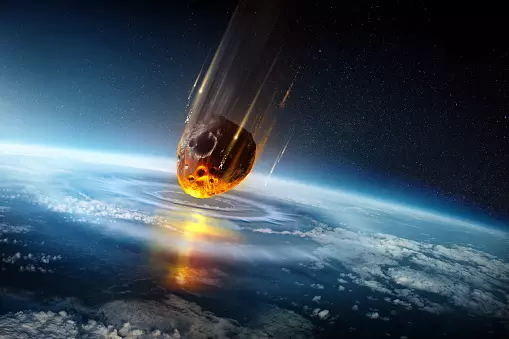
Are we prepared if there's 72% chance of an asteroid hitting earth on July 12, 2038?
This scenario was posed as part of a tabletop exercise conducted by NASA to identify the challenges and gaps that exist in such a situation and to give recommendations on what can be done

What if a never-before detected asteroid is heading towards earth and has a 72 per cent chance of hitting our planet in 14 years, to be exact on July 12, 2038? The chances are the way things stand now, we will not be able to counter it effectively.
This horrifying scenario, which resembles the plot of sci-fi Hollywood film 'Don't Look Up', luckily was just part of a tabletop exercise conducted by NASA’s Planetary Defense Coordination Office along with FEMA (Federal Emergency Management Agency) in April this year. This exercise was conducted to identify the gaps that exist in such a situation and to give recommendations on what could be done.
A hypothetical exercise
According to NASA's statement, this exercise was conducted to assess US’s ability to respond effectively to the threat of a potentially hazardous asteroid or comet on our planet.
There are no known asteroid impact threats in the foreseeable future but this tabletop exercise, was aimed at increasing awareness about asteroid strikes on earth and to provide valuable insights about the risks, response options, and opportunities for collaboration posed by varying scenarios.
In a statement, Lindley Johnson, planetary defense officer emeritus NASA Headquarters in Washington said, “A large asteroid impact is potentially the only natural disaster humanity has the technology to predict years in advance and take action to prevent.”
NASA's fifth biennial Planetary Defense Interagency Tabletop Exercise was held at the Johns Hopkins Applied Physics Laboratory (APL) in Laurel, Maryland and nearly 100 representatives from across US government agencies and international collaborators on planetary defense participated in it.
Likely scenario
The scenario that was laid out in this exercise was this: There is a 72 per cent chance that an asteroid may hit Earth in 14 years. Besides lacking information on how to prevent its impact, the asteroid was set to devastate a regional- to country-scale area, if it should impact.
The challenges include no new ground observations possible for seven months as the asteroid goes behind the sun and is hidden. How do we tackle this challenge?
The takeaways
After participating in the exercise, one of the key takeaways for the participants was that they felt they needed more information on the asteroid to understand how it impacts when it hit earth. That led them to talk about one of the major limitations that the US faces in this sphere, i.e., to quickly commission a spacecraft to gather information about the asteroid via flyby or rendezvous.
Therefore, a critical recommendation made at the event was for the US to develop the capability to rapidly launch a Near Earth Object reconnaissance mission with special spacecraft and instruments to gather information about an asteroid threat.
NASA to launch NEO Surveyor
Meanwhile, in its statement, NASA said, "To help ensure humanity will have the time needed to evaluate and respond to a potentially hazardous asteroid or comet, NASA continues the development of its NEO Surveyor (Near-Earth Object Surveyor), an infrared space telescope designed specifically to expedite our ability to discover and characterise most of the potentially hazardous near-Earth objects many years before they could become an impact threat."
NASA proposes to launch NEO Surveyor on June 2028.
More importantly, NASA has just one technology for Earth impact prevention—kinetic impact—that has been demonstrated in flight, and it has only been demonstrated once.
So, the participants in the exercise suggested additional Earth impact prevention flight demonstrations to increase their maturity and reliability such as ion beam and additional kinetic impactors.
Further, NASA said this exercise was the first to use data from NASA’s DART (Double Asteroid Redirection Test) mission, the first in-space demonstration of a technology for defending Earth against potential asteroid impacts.
The DART spacecraft, which impacted the asteroid moonlet Dimorphos on September 26, 2022, confirmed a kinetic impactor could change the trajectory of an asteroid. Therefore, applying this or any type of technology to an actual impact threat would require many years of advance planning.

